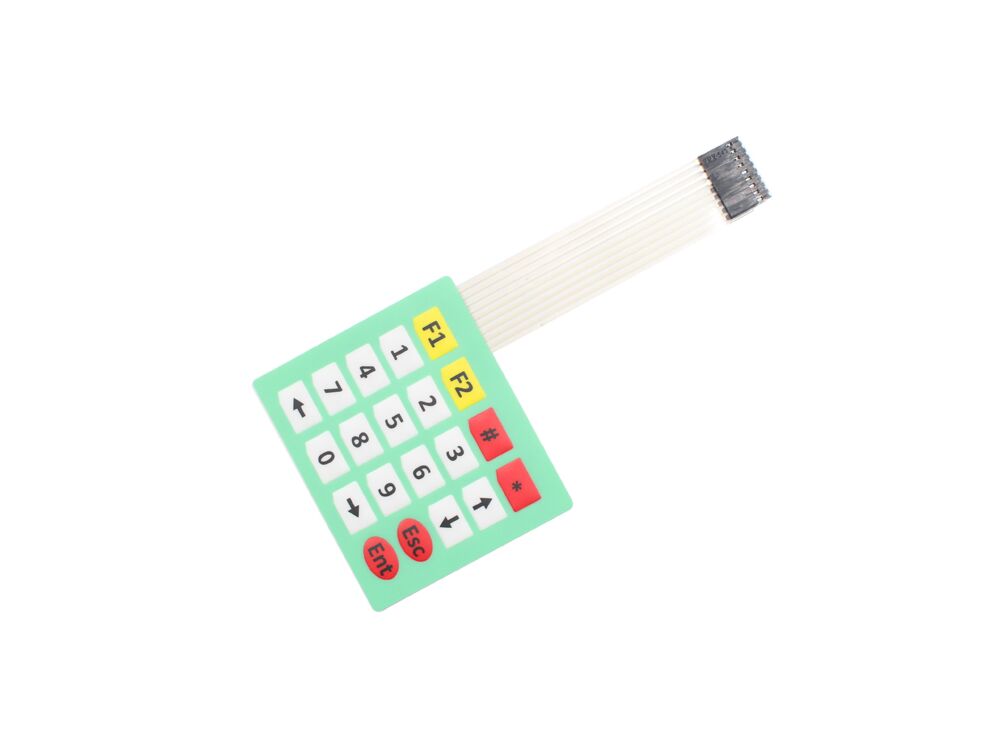How Membrane Switches Are Shaping the Future of Electronic Interfaces
How Membrane Switches Are Shaping the Future of Electronic Interfaces
Blog Article
Understanding Membrane Layer Changes: The Trick to Reliable and resilient Controls

What Are Membrane Switches?
Membrane switches are an advanced service in the world of interface technology, integrating performance and style flawlessly. These tools serve as an interface between individuals and electronic systems, integrating numerous components right into a compact layout. Usually built from versatile, slim layers of materials, membrane switches are created to respond to touch, enabling users to communicate with machinery and digital tools efficiently.
The key components of a membrane button consist of a published circuit layer, graphic overlay, and a spacer layer that avoids unintentional activation. The graphic overlay can be customized to show brand name identity or individual preferences, enhancing visual appeals while making sure functionality. Membrane buttons are generally made use of in different applications, consisting of clinical gadgets, consumer electronic devices, and industrial equipment, owing to their resilience and resistance to environmental elements such as dampness and dirt.
One of the vital benefits of membrane buttons is their capability to endure wear and tear, making them ideal for high-traffic settings. Furthermore, they are light-weight and require marginal area, allowing for ingenious designs in product advancement. Overall, membrane layer switches stand for a sensible and efficient option for modern-day electronic user interfaces, marrying innovation with user-centric style concepts.
How Membrane Layer Switches Job
The procedure of membrane changes joints on a simple yet effective system that converts individual input right into electronic signals. When a user presses the switch, the leading layer flaws, permitting a conductive element in the circuit layer to make call with an equivalent conductive pad on the bottom of the graphic overlay.
The design of membrane switches can vary, however they usually incorporate domes or tactile elements to offer feedback to the individual, improving the general experience - membrane switch. The products made use of in membrane layer buttons, such as polyester or polycarbonate, add to their longevity and resistance to ecological factors, consisting of moisture and dirt. The printed circuits are normally enveloped, which protects them from wear and tear over time.
Benefits of Membrane Layer Buttons

In addition, membrane layer buttons are known for their toughness. Created from durable products, they are immune to dust, moisture, and physical wear, which considerably prolongs their life expectancy compared to conventional mechanical switches. This toughness makes them specifically ideal for high-traffic settings and applications calling for long life.
An additional substantial benefit is the linked here convenience of cleansing and maintenance. The smooth surface of membrane switches minimizes dust buildup and is frequently unsusceptible spills, making them optimal for settings that need constant sanitization.
In addition, membrane layer switches offer a streamlined account, causing a thinner style that can be integrated into numerous gadgets without adding bulk. This attribute not just boosts the visual charm but additionally adds to a much more ergonomic product layout.
Applications of Membrane Layer Switches
Versatile and straightforward, membrane buttons discover applications across a wide variety of industries, consisting of medical tools, consumer electronics, and commercial devices. In the medical area, these switches are integral to gadgets such as analysis devices, patient surveillance systems, and infusion pumps, where integrity and simplicity of cleaning are important. Their ability to hold up against severe settings and preserve performance makes them perfect for such applications.

In consumer electronic devices, membrane layer switches are used in items like microwaves, washing machines, and push-button controls - membrane switch. Their streamlined layout permits instinctive individual interfaces, boosting the total user experience while supplying longevity and resistance to damage
Commercial equipment likewise takes advantage of membrane layer switches, especially in control panels for equipment and automation systems. These buttons offer security against dirt and dampness, making sure consistent efficiency in difficult settings. Their personalized attributes permit suppliers to customize them to details operational requirements, her comment is here enhancing efficiency and functionality.
Choosing the Right Membrane Layer Switch Over
When picking a membrane button, it is crucial to take into consideration numerous variables that affect efficiency and suitability for particular applications. The main considerations consist of ecological problems, tactile responses, resilience, and design requirements.
First, analyze the operating setting; buttons exposed to moisture, chemicals, or extreme temperature levels call for certain materials to ensure long life and performance. Next, examine the demand for responsive feedback. Depending on customer interaction, some applications may gain from a tactile feedback to verify activation, while others might favor a non-tactile style for aesthetic reasons.
Sturdiness is an additional essential aspect; membrane buttons ought to be created to stand up to frequent usage, impacts, and abrasion. Make certain the chosen button can withstand the anticipated lifecycle, particularly in high-usage circumstances.

Final Thought
To conclude, membrane layer switches over act as important components in the layout of long lasting and reliable control systems throughout various industries. Their small style, integrated with robust building and personalized features, enhances individual interaction while making certain long life popular environments. The convenience of membrane switches over permits customized options that meet certain operational requirements, reinforcing their relevance in modern innovation. As markets continue to progress, the importance of integrating reliable membrane button solutions can not be overstated.
Membrane layer switches represent an essential aspect of modern interface style, mixing capability with strength in numerous applications.Membrane switches are a sophisticated service in the realm of individual interface innovation, integrating performance and style flawlessly. Typically constructed from flexible, thin layers of products, membrane layer buttons are made to react to touch, making it possible for individuals to communicate with machinery and electronic devices effectively.
The design use this link of membrane switches can differ, yet they often incorporate domes or tactile elements to provide feedback to the individual, enhancing the general experience.In conclusion, membrane switches over offer as necessary elements in the design of reputable and resilient control systems across numerous markets.
Report this page